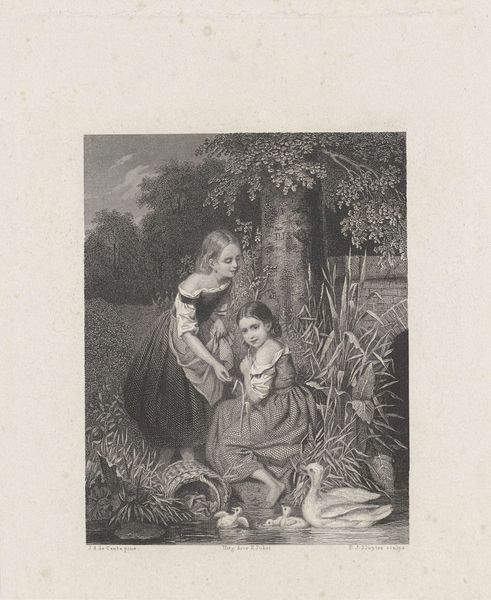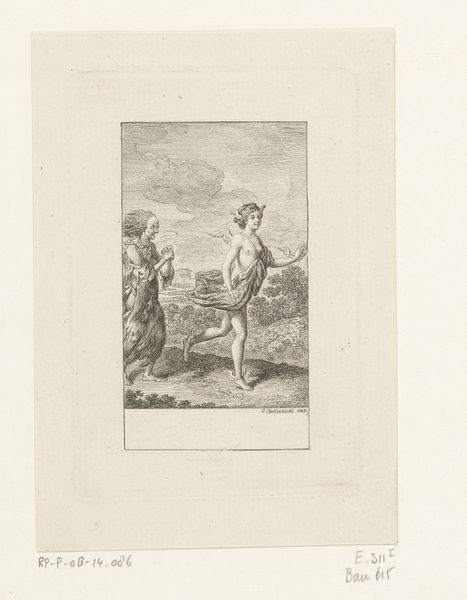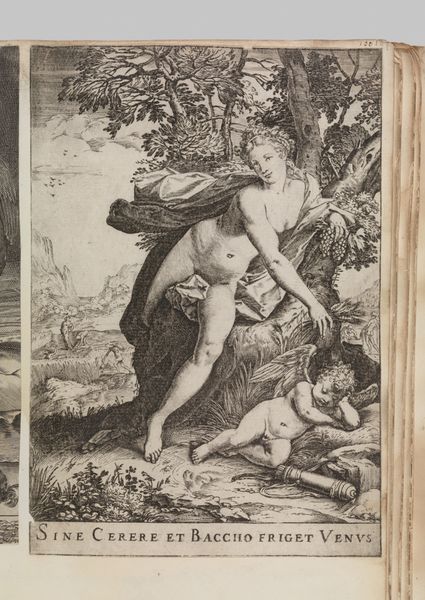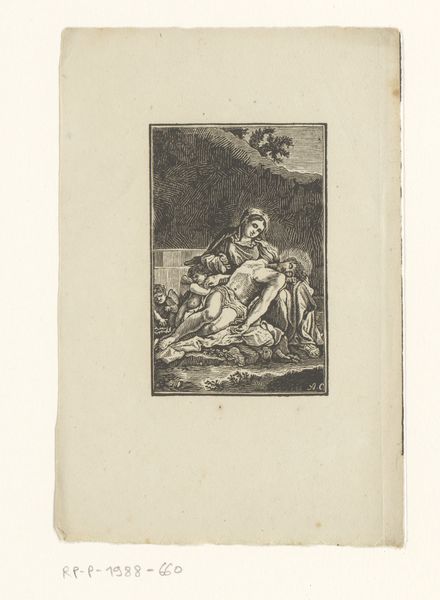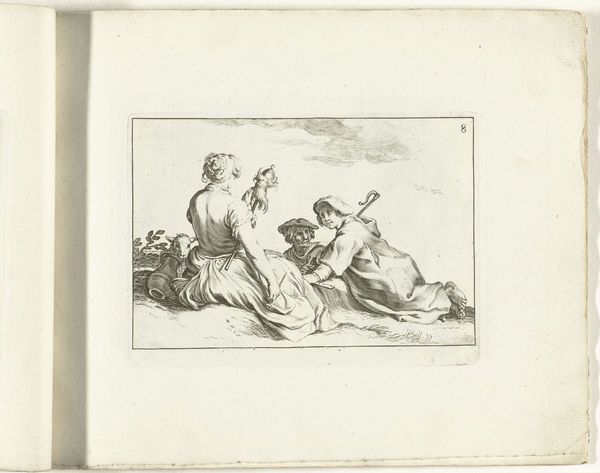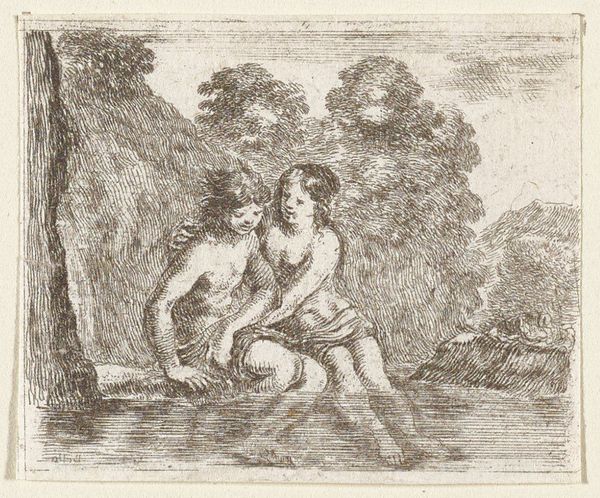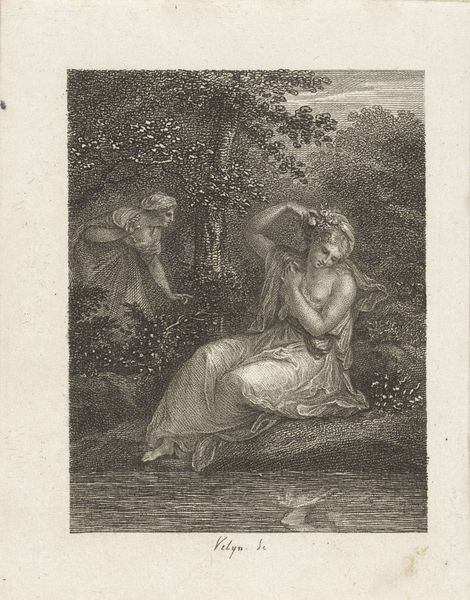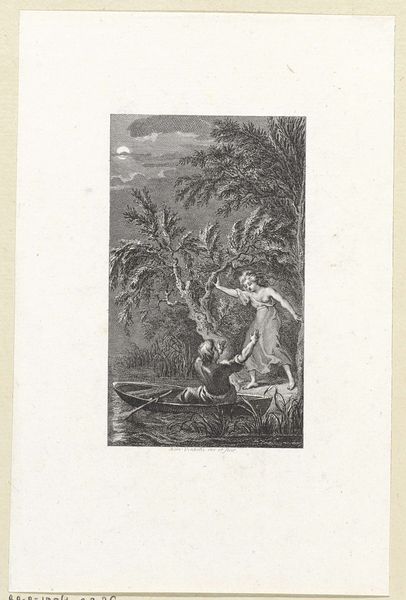
drawing, print, paper, ink, engraving
#
pencil drawn
#
drawing
#
neoclacissism
#
light pencil work
# print
#
pencil sketch
#
landscape
#
figuration
#
paper
#
ink
#
pencil work
#
history-painting
#
engraving
Dimensions: height 209 mm, width 149 mm
Copyright: Rijks Museum: Open Domain
Curator: It's striking how the grief permeates even the landscape. Editor: I agree. Today we’re looking at “Geestelijke en een kind bij een dode,” or “Cleric and Child with a Dead Man,” an engraving made in 1794 by Reinier Vinkeles, currently held at the Rijksmuseum. What stands out to you about it? Curator: The visual language of charity and vulnerability is prominent. We see the cleric, presumably a man of God, offering comfort to a child near a body. It's difficult to look away from the obvious power dynamics inherent in the colonial gaze, wouldn’t you agree? Editor: Absolutely. Vinkeles uses neoclassicism, and that idealizing of form lends a veneer of objectivity to what is clearly a charged, subjective scene. The motifs of death, religion, and a helpless child create a strong visual vocabulary here, resonating even beyond its historical context. The dead man’s relaxed pose feels significant. Curator: Especially against that landscape. That idealized coast juxtaposed against his lifelessness highlights the violence of this colonial encounter. Are we really seeing mourning, or is this a display of power disguised as piety? The engraving allows, or perhaps forces us, to engage with those questions. What narratives are being centered, and whose voices are being erased by that centering? Editor: A critical reading, certainly valid! However, I’m interested in how this imagery would have been understood at the time. What would a 1794 audience see in this depiction of faith and loss? The image has echoes of the pieta, I think. But instead of mother and son, we see this unexpected trio, brought together in a moment of shared grief and loss. The symbols are so malleable, really. Curator: Agreed. Though I cannot help but be mindful of its problematic implications given today's lens. The composition centers figures from a different world order and perpetuates their visual importance. Editor: Yes. That's crucial to acknowledge. Perhaps what’s most compelling about this image is the complex dialogue it sets in motion, both historically and for us today. Curator: Precisely, that it unveils the many sides of an era where humanitarianism and authority were always intertwined.
Comments
No comments
Be the first to comment and join the conversation on the ultimate creative platform.

